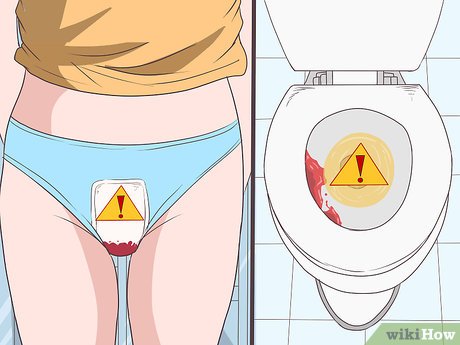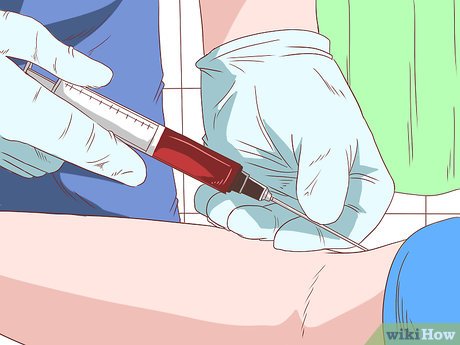This article was co-authored by Marsha Durkin, RN. Marsha Durkin is a Registered Nurse based in Waukegan, Illinois. With over 15 years of professional experience, she works both as a nurse and a Laboratory Information Specialist for Insight Hospital and Medical Center. Marsha received her Associate's Degree in Nursing from Olney Central College in 1987.
There are 11 references cited in this article, which can be found at the bottom of the page.
This article has been viewed 13,228 times.
If you or your child are suddenly bleeding more than normal, such as a nosebleed that won't stop or a cut that doesn't clot, it's natural to be a little bit worried. Your symptoms can indicate a condition called idiopathic thrombocytopenic purpura, a disease that is likely autoimmune in nature. The acute (short-term) version is more likely to affect kids, while the chronic (long-term) version is more likely to affect adults.[1] To diagnose this condition, you should first look for symptoms, though keep in mind, you may not have any symptoms at all with this disease. If you exhibit symptoms, visit the doctor for more diagnostic tests.
Steps
Watching for Symptoms
-
Look for excessive bruising and pinpoint bleeding. With this condition, you may bruise very easily or have reddish purple spots on your skin called purpura.[2] Alternatively, you may notice tiny red-purple spots, called petechiae. Petechiae usually appear on your legs.[3]
- Purpura appear when small blood vessels burst under the skin. While they can be disconcerting, they usually aren't harmful by themselves.
- You may also notice hematomas, which is a lump of clotted blood under your skin. Mostly, you'll just be able to feel a small lump.[4]
-
Watch for extra bleeding in your mouth or nose. With this condition, your gums may bleed more readily, even when you're not brushing. Similarly, you may get nosebleeds more often than normal.[5]
- If you notice these symptoms, talk to your doctor.
Advertisement -
Check for blood in your stools and urine. If you have blood in your urine, it will look red, pink, or even brownish, depending on how much blood is there. With feces, you may notice bright-red blood or it can turn your stool dark brown or black.[6]
- Keep in mind that certain foods and medications can change the color of your urine and feces, including beets, rhubarb, foods with food coloring, and laxatives like Ex-Lax. For example, cake icing and colored cereal can affect urine and feces color.
-
Pay attention to a heavier menstruation. Some women have a heavier period with this condition. Talk to your doctor if you notice your period suddenly getting heavier or if you have a heavier-than-average period.[7]
- If you bleed through a pad or tampon in an hour, that definitely indicates a heavy period, and you need to talk to your doctor.
Advertisement
Visiting the Doctor
-
Call for emergency services if you have bleeding that won't stop. If you or your child has a cut or other injury, including a nosebleed, that won't stop bleeding after 20 minutes, that's a medical emergency. Call the emergency services for your area so you can go to the emergency room.[8]
-
Go to the doctor if you have a mix of symptoms. Schedule an appointment for you or your child if you're exhibiting symptoms. The doctor will start with a physical examination, where they will look for signs of easy bruising, infection, and petechiae.[9]
- Make a list of symptoms before visiting the doctor, including how frequently they occur. That way, you'll have it as a reminder.
-
Expect questions about your medical history. For instance, the doctor may ask you about what illnesses you've had recently. They may also ask you about any medications, supplements, or alternative remedies you may be taking.[10]
- They may also ask you about infections like HIV or hepatitis C, as they are sometimes linked with ITP.
- ITP is also a disease where your doctor will need to rule out other causes first. Typically, they'll ask you a long series of questions to make sure something else isn't responsible for your low platelet levels.
- For instance, they may ask you about how much tonic water you drink and whether you've been exposed to any toxins. That's because they can affect your platelet count if you ingest too much.[11]
Advertisement
Using Diagnostic Tests
-
Be ready for a blood test. A blood test is likely the first test your doctor will run. Specifically, they will want to run a blood cell count to determine your red blood cell and white blood cell counts, as well as your platelet levels.[12]
- With ITP, your white and red blood cells will usually be at normal levels, but your platelet count will be low.
- Be sure to drink plenty of water before going to the doctor, as it's easier for the technician to draw blood when you're hydrated.
-
Expect a blood smear. With this test, the doctor or technician will take a sample of your blood and smear it on a slide. Then, they'll look at your blood under a microscope, where they'll be able to see your platelets and blood cells.[13]
- The doctor will perform this test to make sure the platelet count they found in the first test is correct.
-
Ask about bone marrow tests. This test is usually only performed on adults. The purpose is to determine if your low platelets could have another cause. If you have ITP, your bone marrow won't be affected, while it can be affected by other diseases that would give you a low platelet count.[14]
- The doctor will give you local anesthesia before the procedure to numb the area, though if you're concerned about pain, they may provide more sedation through an IV.
- The doctor will start with a bone aspiration. They'll stick a hollow needle into your hip bone at the back and pull out some liquid bone marrow.
- For the bone marrow biopsy, they'll pull out some solid bone marrow from the same area, also using a needle.
Advertisement
Expert Q&A
Tips
-
Always talk to your doctor if you notice changes in the way you bleed, such as not clotting as easily.Thanks
References
- ↑ https://www.hopkinsmedicine.org/health/conditions-and-diseases/idiopathic-thrombocytopenic-purpura
- ↑ https://medlineplus.gov/ency/article/000535.htm
- ↑ https://my.clevelandclinic.org/health/articles/5726-immune-thrombocytopenia
- ↑ https://www.nhlbi.nih.gov/health-topics/immune-thrombocytopenia
- ↑ https://medlineplus.gov/ency/article/000535.htm
- ↑ https://www.hopkinsmedicine.org/health/conditions-and-diseases/idiopathic-thrombocytopenic-purpura
- ↑ https://www.nhlbi.nih.gov/health-topics/immune-thrombocytopenia
- ↑ https://medlineplus.gov/ency/article/000535.htm
- ↑ https://www.nhlbi.nih.gov/health-topics/immune-thrombocytopenia
- ↑ https://rarediseases.info.nih.gov/diseases/5194/idiopathic-thrombocytopenic-purpura
- ↑ https://pdsa.org/about-itp/in-adults.html
- ↑ https://my.clevelandclinic.org/health/articles/5726-immune-thrombocytopenia
- ↑ https://www.nhlbi.nih.gov/health-topics/immune-thrombocytopenia
- ↑ https://stanfordhealthcare.org/medical-conditions/cancer/immune-thrombocytopenic-purpura/itp-diagnosis.html





























